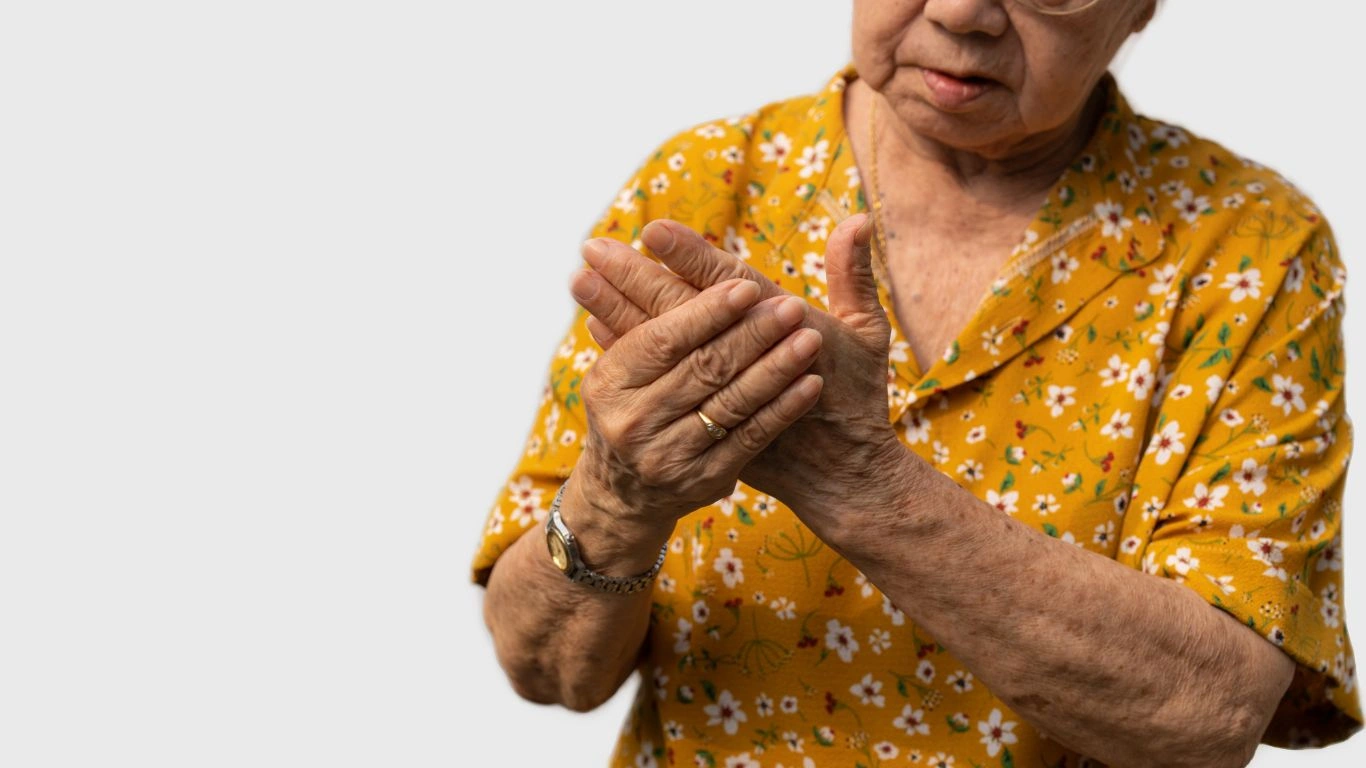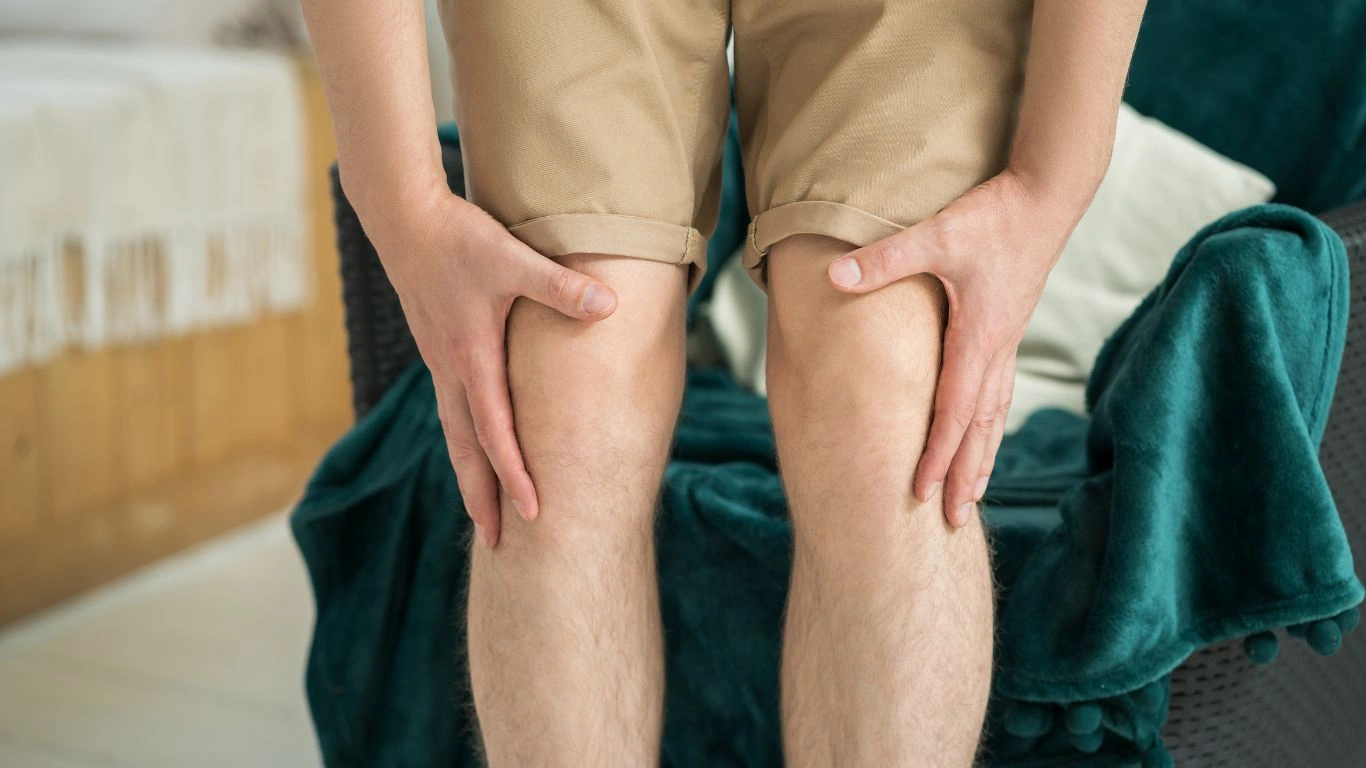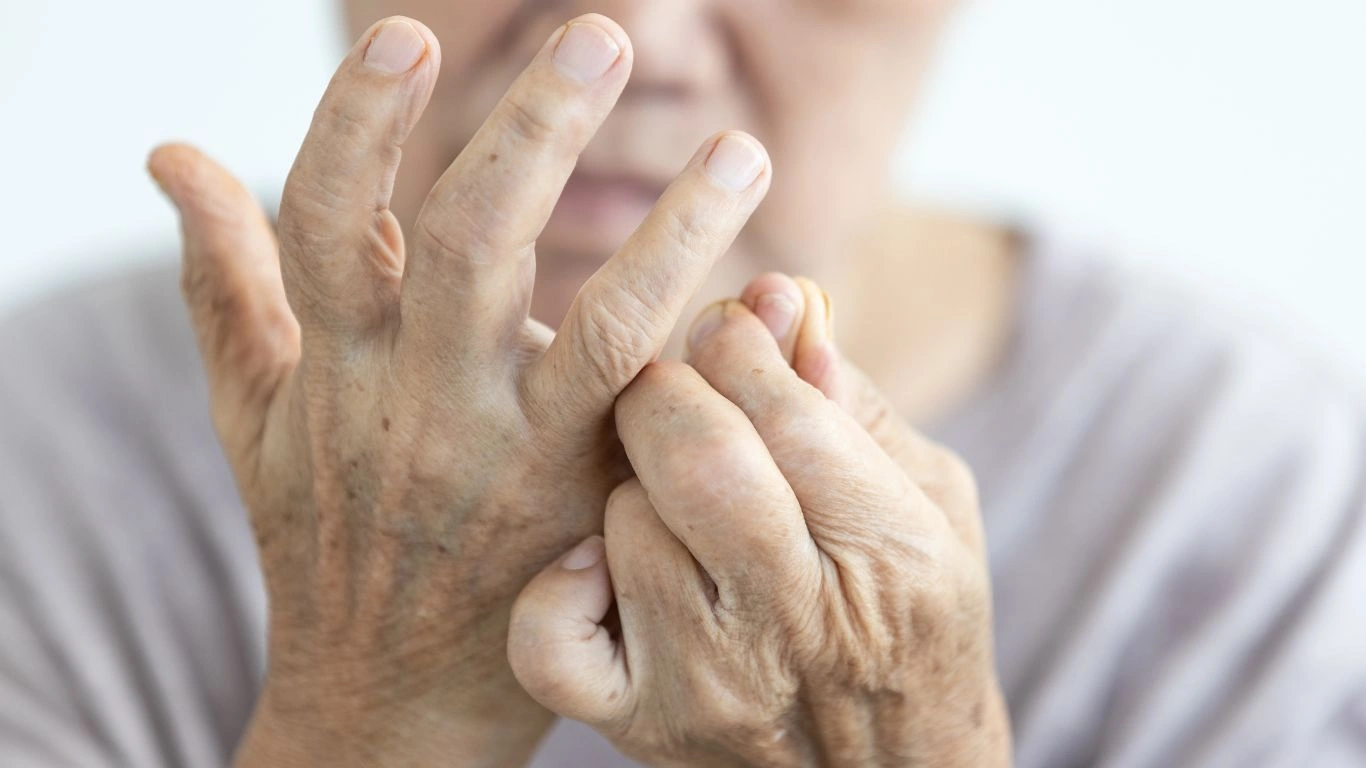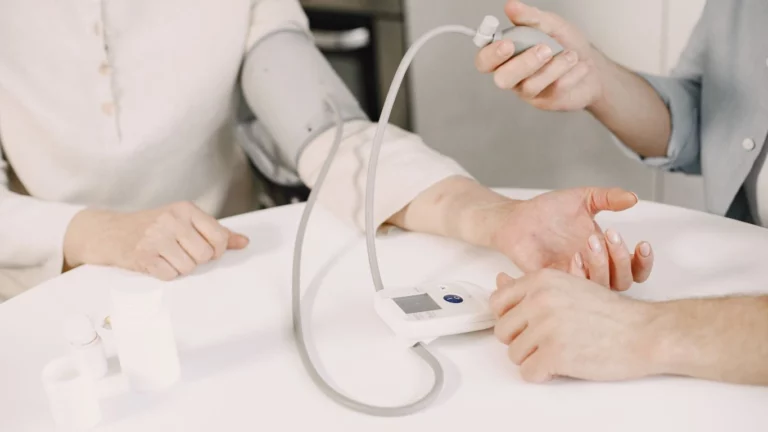Pins and Needles from Rheumatoid Arthritis? Here’s What It Really Means
If you’ve ever been in a doctor’s office or clinic, especially in a rheumatology setting, you’ve probably heard a lot about rheumatoid arthritis (RA). As a Rheumatology nurse practitioner, I’ve had my fair share of patients with a variety of questions about this chronic autoimmune condition. One question that often comes up is, “Can rheumatoid arthritis cause pins and needles sensation?” The short answer is yes, it absolutely can, but understanding why and how it happens requires a deeper look at RA and its effects on the body. Let’s dive in and explore this sensation, and what it could mean for someone with RA.
Understanding Rheumatoid Arthritis and Its Impact on Nerves
Rheumatoid arthritis is a chronic inflammatory disease that primarily affects the joints, but its impact isn’t just limited to your knees, elbows, or hands. This autoimmune disorder happens when the body’s immune system mistakenly attacks its own tissues, particularly the synovium, which is the lining of the membranes that surround the joints. As a result, the joints become inflamed, stiff, and swollen. In severe cases, RA can cause joint damage and deformities.
However, the reach of rheumatoid arthritis extends beyond the joints and into other areas of the body, including the nerves. While it’s easy to focus on the pain and swelling in the joints, the fact is that RA can affect the nervous system, which can lead to a variety of sensations, including the dreaded pins and needles feeling. Let’s break down how this happens.
What is Pins and Needles Sensation?
Definition and Common Causes
If you’ve ever experienced a pins and needles sensation, you know the feeling all too well. It’s that strange, tingling or prickling feeling that can occur when you’ve sat or slept in one position for too long, causing pressure on your nerves. But in the context of rheumatoid arthritis, this sensation doesn’t always go away once you change positions. It can linger and sometimes even worsen as the disease progresses.
Pins and needles, also known as paresthesia, is caused by the compression or irritation of nerves. Normally, when a nerve is pinched or irritated, it sends abnormal signals to the brain, resulting in that odd, tingly feeling. In the case of RA, this happens for several reasons, often related to inflammation and nerve compression, which I’ve seen frequently in my practice. This feeling can occur in different parts of the body, but is most common in the hands, feet, or arms.
Why Do People with RA Experience This Sensation?
To understand how RA can lead to pins and needles, we need to look at how the disease affects the body on a deeper level. RA can cause swelling in the joints, and over time, this inflammation can spread to surrounding tissues, including those near the nerves. When inflammation occurs near a nerve, it can compress or irritate that nerve, leading to the tingling sensation we associate with pins and needles.
Another key factor to consider is that rheumatoid arthritis can cause damage to the blood vessels. This, in turn, can affect circulation and the delivery of oxygen to nerves, leading to further nerve-related symptoms. In some cases, long-standing RA may even lead to nerve damage or neuropathy, which can contribute to more persistent and bothersome tingling sensations.
Which Nerves Are Affected in RA?
It’s important to understand which nerves are most likely to be affected in people with RA. The most common areas where patients with RA experience pins and needles are in the hands, wrists, and feet. These are areas where inflammation in the joints can put pressure on nearby nerves, especially those that run along the arms and legs.
Common Areas Affected by RA-Related Nerve Compression
- Wrist and Hand: Inflammation in the wrist joints can affect the median nerve, leading to carpal tunnel syndrome, which often results in tingling and numbness in the fingers and hands.
- Feet and Toes: Inflammation in the joints of the feet, especially in the toes, can cause pressure on nerves, leading to pins and needles in the feet. This can also be exacerbated by other complications of RA, such as foot deformities.
- Neck and Spine: Sometimes, RA can affect the cervical spine, which can lead to nerve compression in the neck, causing tingling sensations that radiate into the arms.
Can Rheumatoid Arthritis Cause Nerve Damage?
As mentioned earlier, chronic inflammation can cause more than just temporary discomfort. Over time, if left untreated or poorly managed, RA can lead to nerve damage, also known as neuropathy. This condition occurs when nerves are repeatedly compressed or inflamed, leading to longer-lasting or even permanent changes in sensation. Neuropathy in RA can cause tingling, burning sensations, or even numbness, making daily activities much harder to manage.
In my experience as a nurse practitioner, I’ve worked with patients who’ve experienced these symptoms, and it’s always important to differentiate between temporary tingling and more severe nerve involvement. If a person with RA starts experiencing persistent numbness or weakness in their limbs, it’s essential to consult with a healthcare provider, as it could indicate nerve damage that requires prompt attention.

How RA Treatment Affects Pins and Needles Sensations
So, now that we know how RA can cause pins and needles, you might be wondering what can be done about it. Fortunately, with proper management, the symptoms of RA, including nerve-related sensations, can be alleviated or minimized. In my practice, I’ve seen firsthand how medications and lifestyle adjustments can make a significant difference in managing these symptoms.
Medications to Manage Nerve Compression and Inflammation
The main goal of RA treatment is to reduce inflammation and control the immune response. By managing the inflammation, the pressure on nerves is often reduced, which can help relieve the tingling sensations. Common medications that are prescribed to achieve this include:
- Nonsteroidal anti-inflammatory drugs (NSAIDs): These help reduce swelling and pain in the joints, which in turn can reduce pressure on the nerves.
- Disease-modifying antirheumatic drugs (DMARDs): These are the cornerstone of RA treatment. Methotrexate is one of the most commonly prescribed DMARDs, and it works to slow down the progression of the disease, helping to prevent nerve compression over time.
- Biologics: For those with moderate to severe RA, biologic drugs like TNF inhibitors can help reduce the inflammation that contributes to nerve problems.
These medications can take time to work, but they’re often very effective at reducing inflammation and improving quality of life. As inflammation decreases, the tingling sensations often subside as well.
Physical Therapy and Lifestyle Adjustments
In addition to medication, physical therapy can be a game-changer for RA patients dealing with nerve compression. Working with a skilled therapist can help strengthen muscles around affected joints, reduce pressure on nerves, and improve overall mobility. Sometimes, splints or braces can also be used to help reduce pressure on specific areas, like the wrists or knees.
Aside from treatments, making lifestyle adjustments—like staying active, eating anti-inflammatory foods, and getting enough rest—can also play a major role in keeping RA symptoms under control, including the pins and needles sensation.

When to Seek Help
While pins and needles can sometimes be a mild, temporary annoyance, it’s crucial to keep an eye on any changes in sensation or new symptoms. If you experience persistent tingling, numbness, or weakness, especially in combination with joint pain, it’s important to reach out to your healthcare provider. As a nurse practitioner, I always encourage patients to stay proactive about their symptoms. The sooner we can address nerve-related issues, the better the long-term outcome for managing rheumatoid arthritis.
Remember, RA can affect everyone differently. What works for one person might not work for another, and that’s why personalized care is so important. With the right treatment and management plan, you can live a full, active life despite rheumatoid arthritis and the pins and needles sensation it can sometimes bring.

Long-Term Management of RA and Pins and Needles Sensations
Living with rheumatoid arthritis is all about the long game. It’s not just about managing flare-ups in the moment, but really building a toolkit that helps you stay functional, comfortable, and in control over time. And yes—this includes tackling those pesky pins and needles sensations that can creep in and throw you off. From my time working closely with RA patients, I’ve learned that managing nerve-related symptoms isn’t always straightforward, but with the right approach, it’s absolutely doable.
Once we’ve addressed inflammation with medications and immediate treatments, the focus shifts to long-term strategies. Let’s be honest, no one wants to be at the mercy of tingling hands or numb feet forever. So, here’s what I usually recommend, both from a clinical and personal care standpoint.

Maintaining Joint Health to Protect Nerves
One of the best ways to reduce nerve compression in RA is to protect the joints early and consistently. If joints stay inflamed, they can become deformed over time—and that deformation can press on nearby nerves. So it’s not just about easing pain in the now, it’s also about preserving the structure and function of your joints long term.
- Use joint protection techniques: Things like ergonomic tools, wrist braces, or padded footwear can take the pressure off joints and nerves.
- Stay active, but smart: Low-impact activities like swimming, walking, or tai chi can help keep joints mobile without over-stressing them.
- Posture matters: Especially when RA affects the cervical spine. Poor posture can increase nerve compression, particularly in the neck and shoulders.
One of my patients, a young mom in her 30s, struggled with numbness in her fingers that made even texting a chore. Through a combo of hand splints, regular stretching, and methotrexate, we got her symptoms under control—and more importantly, kept them from coming back. That’s the kind of progress we aim for.
How to Tell If It’s RA or Something Else
Now, this is a question I get all the time. “Is this tingling really from my RA, or is it something else?” And it’s a fair concern. While rheumatoid arthritis can absolutely cause pins and needles sensations, there are other conditions that can mimic or overlap with RA symptoms.
Other Possible Causes of Pins and Needles
- Carpal tunnel syndrome (CTS): This is super common in RA, especially in those with wrist inflammation. CTS happens when the median nerve is compressed at the wrist, causing tingling in the thumb, index, and middle fingers.
- Peripheral neuropathy: Sometimes, patients with RA also develop other autoimmune conditions like Sjögren’s syndrome, which can cause nerve damage independently of joint inflammation.
- Vitamin deficiencies: B12 deficiency in particular can lead to neuropathy. It’s always worth checking levels if you’re having persistent tingling or numbness.
- Diabetes: Diabetic neuropathy can feel similar and may be present in patients with overlapping health issues.
In clinic, when someone tells me their fingers are tingling or they feel pins and needles in their feet, I never assume it’s *just* RA. We dig a little deeper—nerve conduction studies, lab work, and even imaging can help us figure out what’s really going on.

When Pins and Needles Require Immediate Attention
Now here’s where I put my nurse practitioner cap on a bit tighter. While tingling and numbness can be relatively harmless, sometimes they’re your body’s way of waving a red flag. There are times when pins and needles in RA patients signal something more serious—and those moments require fast action.
Red Flag Symptoms to Watch For
- Sudden onset of numbness or weakness in one limb, especially if it doesn’t go away within a few hours
- Loss of bladder or bowel control along with back or leg tingling—this could indicate spinal cord compression
- Severe neck pain with numbness or tingling in both arms or legs
- Progressive worsening of symptoms despite treatment
I once had a patient who ignored worsening tingling in her legs until she couldn’t walk without a cane. We caught cervical spine instability just in time and got her in for surgical intervention, but that experience really drove home how important it is not to brush these symptoms off.
RA Flares and the Return of the Tingling
Here’s the thing that often surprises people: even if your pins and needles go away, they might come back during an RA flare. It’s part of the inflammatory cascade. When your immune system goes into overdrive, all that swelling can come roaring back—and with it, nerve irritation.
In these cases, the tingling usually tracks with other symptoms like joint swelling, fatigue, and stiffness. Keeping a symptom journal can really help here. If you start noticing a pattern—say, tingling hands every time your knees swell up—that’s something worth sharing with your provider. We can use that info to adjust your treatment and stay ahead of the flare.

Supplements and Natural Support for Nerve Health
Let’s talk about something patients ask me about a lot: vitamins and supplements. While these aren’t magic fixes, some can play a supportive role in reducing nerve irritation and promoting overall nerve health. Here’s what I usually suggest, always with a big side of “talk to your provider first”:
- Vitamin B12: Crucial for nerve function. A deficiency can mimic or worsen neuropathy symptoms.
- Alpha-lipoic acid: An antioxidant that may help reduce nerve-related pain and improve function in some people.
- Omega-3 fatty acids: Found in fish oil, these can support both joint and nerve health thanks to their anti-inflammatory effects.
- Turmeric (curcumin): Some early evidence shows it can reduce inflammation and might help ease symptoms in RA overall.
I had a patient who started taking B12 and Omega-3s after we found low levels in her labs. Between that, her DMARD therapy, and some PT, she reported a big drop in tingling after about six weeks. It’s never one thing—it’s about building a support system for your whole body.
Of course, not every supplement works for everyone. But with careful monitoring and collaboration between patient and provider, they can absolutely be part of a well-rounded approach.
Physical Therapy, Nerve Mobilization, and Lifestyle Tweaks
One of the most overlooked—and underrated—tools for dealing with rheumatoid arthritis and pins and needles sensations is physical therapy. I cannot tell you how many times I’ve seen PT change a patient’s quality of life. And I’m not just talking about exercises to stretch or strengthen muscles (though those are helpful, too). I’m talking about targeted nerve mobilization techniques and customized movement plans that actually help reduce nerve compression and inflammation-related stiffness.

What Exactly Is Nerve Gliding?
If you haven’t heard of nerve gliding or nerve flossing, buckle up—it’s fascinating and so effective when done right. Basically, these exercises help move the nerves through their surrounding tissues, reducing adhesion and irritation. It’s like giving your nerves a little space to breathe. I’ve had several patients come back after just a couple weeks of guided nerve gliding exercises and say, “Wow, my hands don’t feel like they’re buzzing anymore.” It’s not instant magic, but it’s pretty close for some folks.
- Median nerve glides: These are especially helpful for carpal tunnel-like symptoms in RA.
- Ulnar nerve glides: Great for those dealing with tingling in the ring and pinky fingers.
- Radial nerve mobilizations: For discomfort along the back of the arm or hand.
Just be sure to learn these from a trained therapist—doing them wrong can irritate things further. A lot of times, we collaborate directly with PTs to build a safe, progressive plan that fits the patient’s current stage of disease activity.
How Sleep, Stress, and Diet Play a Role
Okay, let’s talk lifestyle for a second. Because trust me, it’s not just the meds or the exercises that matter. When patients ask me, “Why are my pins and needles worse some days than others?”—more often than not, the answer lies in what’s happening outside the joints.

Why Better Sleep Can Reduce Pins and Needles
Lack of quality sleep is like throwing gasoline on the inflammation fire. When your body doesn’t get enough rest, your immune system goes haywire. Plus, poor sleep posture (like curling your wrists under a pillow) can increase pressure on already-sensitive nerves. I often suggest using ergonomic pillows or wrist braces at night. It sounds simple, but it can genuinely make a huge difference.
The Role of Stress
Stress is another big one. Emotional stress translates into physical tension, especially in the neck and shoulders, which can pinch nerves and trigger tingling. Deep breathing, guided imagery, yoga, or even regular short walks outdoors—whatever helps you decompress—helps your nervous system chill out. I’ve had patients see their symptoms reduce dramatically after adding just 10–15 minutes of daily mindfulness.
Anti-Inflammatory Eating
Then there’s diet. I’m not a dietitian, but after years in rheumatology, you start seeing patterns. Patients who adopt a more anti-inflammatory eating style—like the Mediterranean diet—tend to report less overall pain and less nerve irritation. Foods rich in omega-3s, antioxidants, and B vitamins support both joint and nerve health.
- Fatty fish like salmon and mackerel
- Leafy greens and colorful veggies
- Whole grains, nuts, and seeds
- Minimal processed sugar and refined carbs
I always recommend checking in with a nutritionist or your primary care provider to tailor your diet to your specific health needs—but don’t underestimate how food can support your healing journey.
When Medications Are Needed (and Which Ones Help)
We’ve talked about lifestyle and physical therapy, but sometimes, you really do need pharmacological support—especially when the pins and needles are tied to active RA inflammation or nerve compression. The goal here is to reduce the underlying cause so the nerves can calm down.
Medications Commonly Used for Nerve Symptoms in RA
- DMARDs: These include methotrexate, leflunomide, and biologics like adalimumab. By controlling overall RA activity, they indirectly reduce nerve-related symptoms.
- Steroids: Short bursts can rapidly reduce inflammation around a nerve, though they’re not ideal long-term.
- Gabapentin or pregabalin: These are nerve-specific medications sometimes used when pins and needles are due to nerve sensitivity rather than inflammation alone.
- NSAIDs: Helpful for temporary relief, especially during flares, though again—careful long-term use is essential.
I often explain it like this: you wouldn’t put out a kitchen fire with a blanket and then walk away without turning off the stove. Meds help put out the fire, but we also want to stop the source—which is why combining medication with lifestyle shifts, therapy, and regular monitoring is the sweet spot.
Can Rheumatoid Arthritis Cause Pins and Needles Sensation? Final Thoughts
So, circling back to our big question—can rheumatoid arthritis cause pins and needles sensation? Absolutely. It can, and it often does. But it’s also not the whole story. Tingling and numbness in RA can come from joint inflammation, nerve compression, overlapping autoimmune issues, vitamin deficiencies, and more. The key is understanding your body’s signals and working with your care team to treat the root causes—not just mask the symptoms.
As a rheumatology NP, I’ve seen firsthand the impact of early intervention, clear communication, and consistent care. Don’t settle for vague answers or live with discomfort just because it’s “part of the disease.” There are so many tools we can use together to improve not just your RA but your day-to-day comfort and quality of life.
Whether it’s tweaking your sleep habits, changing up your treatment plan, or simply adding a few stretches to your morning routine—every bit counts. Your body is worth that care.
References
- National Institutes of Health (NIH)
- Health.com
- Arthritis Foundation
- Centers for Disease Control and Prevention (CDC)
Disclaimer
This article is intended for informational purposes only and does not constitute medical advice. Always consult with a qualified healthcare professional before making changes to your treatment or health regimen. The content reflects clinical insights and personal experiences as a rheumatology nurse practitioner but should not replace individualized care.

Tarra Nugroho is a dedicated Nurse Practitioner with a strong foundation in family and preventive care. She brings both compassion and clinical expertise to her practice, focusing on patient-centered care and health education. As a contributor to Healthusias.com, Tarra translates medical knowledge into clear, empowering articles on topics like women’s health, chronic disease management, and lifestyle medicine. Her mission is simple: help people feel seen, heard, and informed—both in the clinic and through the content she creates. When she’s not caring for patients, Tarra enjoys weekend hikes, plant-based cooking, and curling up with a good health podcast.






